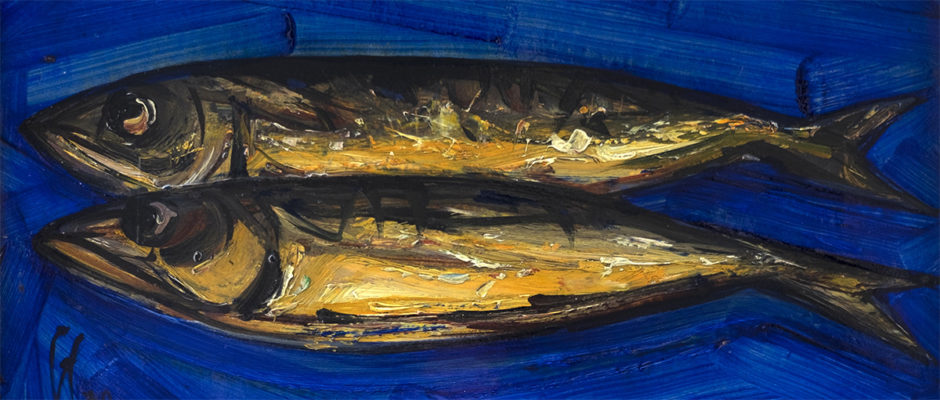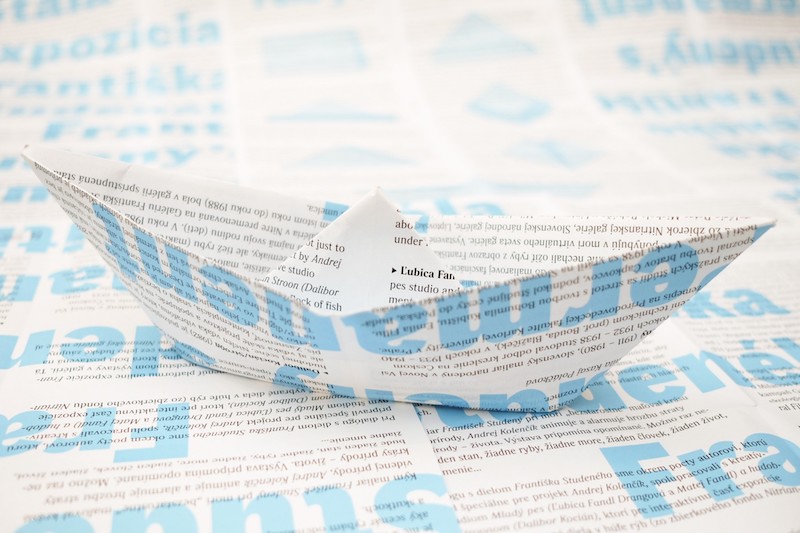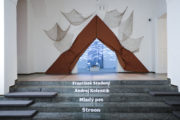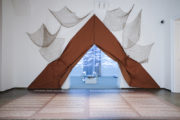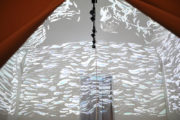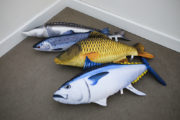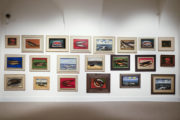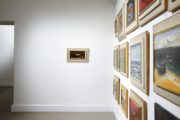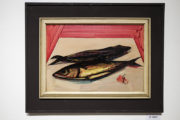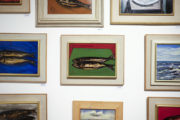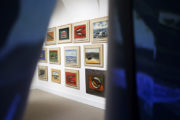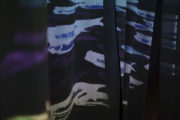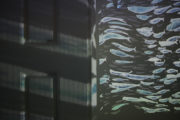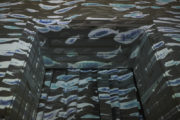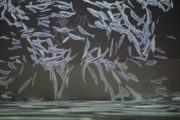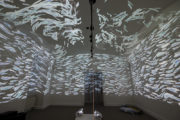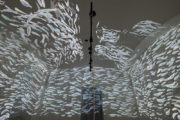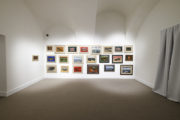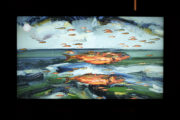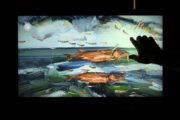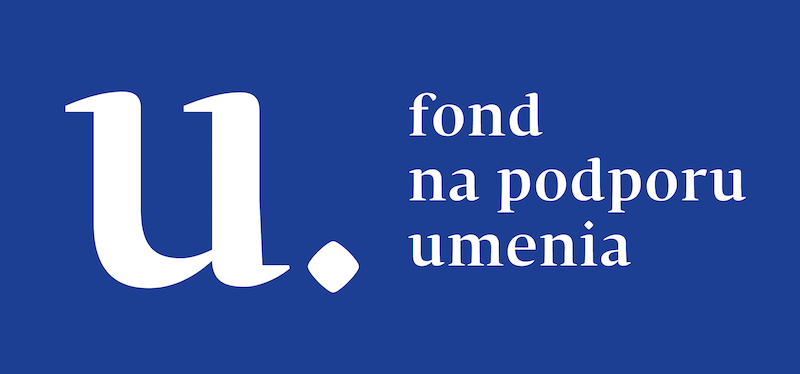Nitra Gallery has reintegrated one of its long term projects back into its portfolio - an exposition dedicated to an artist whose life and work is linked with the region itself.
Exhibition in 3D (3D Real – Virtuálne prehliadky)
Nitra Gallery has reintegrated one of its long term projects back into its portfolio – an exposition dedicated to an artist whose life and work is linked with the region itself.
Using contemporary exhibition language, the current permanent exposition presents the work of a genre artist Fratišek Studený who passed away forty years ago. A group of creative young people like Andrej Kolenčík, the “Mladý pes” team and Stroon have been invited to join the project and present Studený’s world in their own unique ways.
The curators have created a concept that relies mostly on memories and stories provided by the artist’s daughter, Katarína Kišová and focuses on the time the artist spent with his family by the sea/under the tent. Inside the tent (the exposition), the visitor can explore many fish which are an iconic feature of František Studený’s work. Naturally, his works cover a much broader spectrum of themes, but the current exposition focuses on the artist’s fascination with painting fish and we brought the fish from František Studený’s works back to life inside the tent and let them swim with the tide of the virtual gallery. The exhibition showcases works from various collections, including Nitra Gallery, Slovak National Gallery, the Liptov Gallery of Peter Michal Bohúň in Liptovský Mikuláš, the Art Gallery of Považie in Žilina.
The exhibition space inside the tent links different time periods, or rather centuries (the previous one and the current one). Various artistic approaches and creative methods unite the works of František Studený, Andrej Kolenčík and the Mladý pes team.
Our current understanding of the dreamy, romantic or even sentimental illusions of František Studený’s works unveils a massive post-apocalyptic exodus of Andrej Kolenčík’s fish. The artistic reproduction (reanimation) of a sea of fish is miles away from our naive ideas of a blue sea full of life. Kolenčík revives the “smoked mackerels from the canvas” in an animated story titled Reanimation in order to send them off in flocks into the… unknown.
While František Studený painted “light-heartedly” the beautiful seaside he used to visit, Andrej Kolenčík animates and warns about losing the beauties of nature – of life. The exhibition reminds us of the neglected. In the future, there might not be any tent, any fish, any sea, any people, any life, any art…
While contemplating František Studený’s work, we have decided not just to pay a tribute to him, which was custom-designed for this project by Andrej Kolenčík, but we have also worked with the Mladý pes creative studio (Ľubica Fandl Drangová and Matej Fandl) and the musician Stroon (Dalibor Kocián) who “set in motion” several artworks selected from the flock of fish (of the Nitra Gallery’s collection fund). The permanent exposition in Nitra Gallery’s Salon also features a new, critical (environmental) approach.
František Studený (1911 – 1980), a Slovak painter born in Nová Ves nad Žitavou, from 1932 to 1938, he studied drawing at the Czech Technical University (prof. Bouda, Blažíček), from 1933 to 1940, he studied geography at the Faculty of Science at Charles University in Prague. Studený focused on painting landscapes from the region of Nová Ves nad Žitavou where he regularly returned from the urban Bratislava, he was also fascinated with costal landscapes which became another one of his favourite themes. He remained captivated with still life, painted flowers, fruits, everyday objects, bread, potatoes, but also fish (smoked mackerels). His figural works featured mostly portraits of his family, especially the children. In 1982 (until 1990), the Regional Gallery in Nitra was renamed the František Studený Gallery in Nitra, in the same year (until 1988), the gallery opened his permanent exposition.
Andrej Kolenčík (1984) is a filmmaker and graphic designer. He directs feature films, animated and documentary films, videoclips and commercials. He also does illustrations and design. He is a co-founder of Fest Anča and worked as its program director for six years. In 2014, he was selected from among 4000 applicants for the Berlinale Talents event. His films have received awards at various international film festivals. His works mostly rely on irony, humour and exaggeration. His latest projects include the direction of a sci-fi documentary series for children titled Barrow which is about Milan Rastislav Štefánik and is produced by RTVS or an international campaign Green Screen that focus on teaching filmmakers about ecologically friendly productions. Since 2015, he has been working under his own brand Admiral Films.
Ľubica Fandl Drangová (1988) is a co-founder and the head of the Mladý pes studio and the Bratislava Game Jam project. She studied theatre management at the Academy of Performing Arts and HUMAK in Turku (Finland). She loves art and technologies and the new opportunities this union offers. It has led her to organising events that explore the intersections of these two disciplines and to her own research of interactive graphic art.
Matej Fandl (1988) is a coder at the Mladý pes studio. He studied cognitive science at the Faculty of Mathematics, Physics and Informatics at the Comenius University and at the University of Vienna. He works on artificial intelligence, natural user interfaces, multi-agent models and computer visions. He is a fan of unorthodox programming languages, e.g. all kinds of Lisps, Haskell as well as open-source resources like the Godot engine.
Dalibor Kocián/Stroon (1982) is a pulsating element at the Slovak music scene. Not just thanks to the vibraphone, his instrument of choice, but also thanks to a large scale of cooperations he is a part of. Currently, he focuses mostly on temple music, but only on its formal part.
Exposition views:
With financial support of the Slovak Arts Council public funds. The Council is the leading partner of the project.
